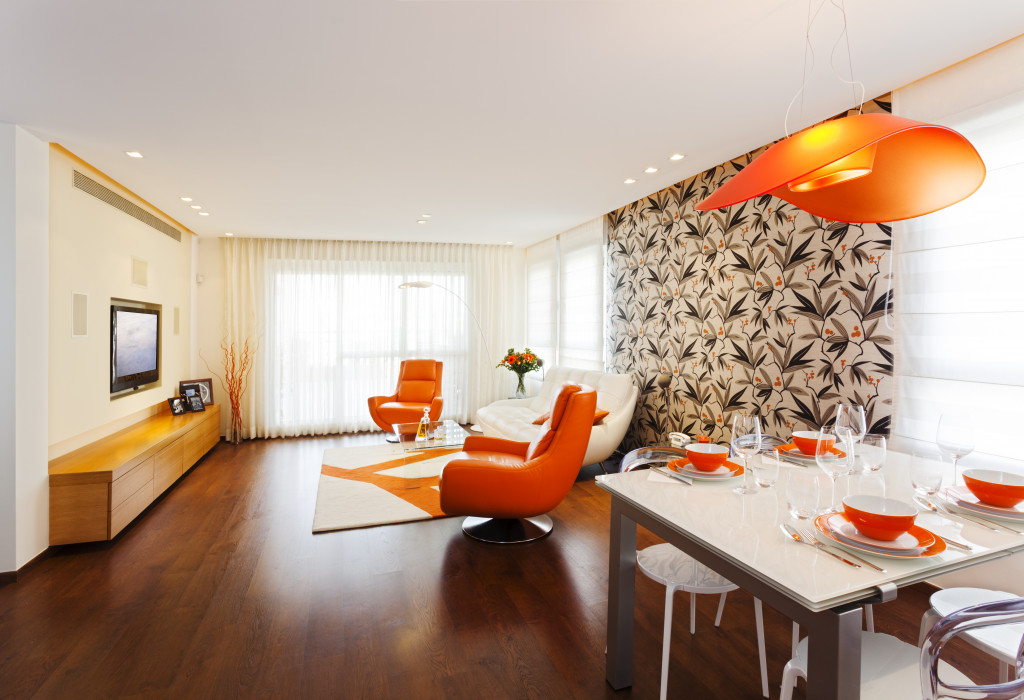A few decades ago, homes used to have closed-off rooms, where every area has its own separate space. By the 90s, interior design and home building switched to ubiquitous open concept designs. Homeowners began tearing their walls down to make way for big, bright spaces that give a feeling of openness and relaxation. But as architectural trends come and go, many realized that open-floor plans are not a great idea anymore.
Combining common rooms has already lost its luster. As the COVID-19 pandemic forced everyone to stay indoors, this triggered a demand to allocate private spaces for home offices, study corners, and entertainment rooms. Many are flocking to home furniture stores to reinvent their work and study spaces and match their specifications.
Although the open-floor plan has proved its remarkable staying power in interior design, it’s time to reinvent our living spaces to make them more functional, private, and personalized. If you’re planning to revamp your home layout, this article will discuss why an open-floor plan is something you should never consider. Take note of the following key points to ensure an attractive layout for your home without sacrificing your needs.
Amplified noises
One of the biggest drawbacks of open-floor spaces is the lack of walls to block all the noises from different parts of the house. If you have a large family, you’re likely familiar with the sounds coming from the blaring TV in the living room, the loud washing machine in the laundry area, and the endless banging of pans and pots in the kitchen. Walls act as bouncing-off points to prevent the noise to travel everywhere. Without walls to separate each room, there is no barrier to protect you from the noise.
As the pandemic gathered everyone at home, privacy has become a primary necessity. The challenge becomes more difficult if you have little kids running down the hallways and running their bicycle around the combined spaces. This may often lead to accidents if children have a habit of zipping into busy areas such as the kitchen.
While there are alternative ways to block off the noise, such as sound panels, shelves, and solid-core doors, they’re not enough to keep the noise level down. Those who like to work in complete silence often suffer the most. Those with higher ceilings create the most acoustical nightmare since mitigating noises is almost impossible.
Hiding clutter is difficult

Aside from the relentless noise, an open-floor plan makes way for aesthetic issues. Sure, an open-floor space ensures freedom of interaction if you have guests in the living room while you’re in the kitchen preparing meals. But an open-floor concept exposes your home in its worst glory. Your guests have a full view of the messy countertop, dirty dishes, scattered toys, and other messy aspects of the typical family life.
For those who find peace and comfort in clutter-free and squeaky-clean areas, an open-floor plan will give a jarring impression. Everywhere you go there’s always a mess or object that will catch your eye, which is very distracting. While other people will simply ignore the mess, neat freaks will always feel compelled to make everything in order.
The smell of the house is another issue. If you’re using a diffuser or a home fragrance product, you likely enjoy the idea of a great smelling home. But with an open-floor plan, making your home smell fantastic is just a waste of time. Your vent fan may not be effective in eliminating the lingering smell from the kitchen or whatever mess you left in the sink.
Decorating is a challenge
A great home layout lets you rearrange furniture and decors to make it look brilliant, practical, and livable. Unfortunately, an open-floor space can make home rearrangements more difficult without the walls separating each area. You have to consider the amount of space allocated for each room without ruining the right balance.
Creating a barrier or a large sectional between rooms may be a great idea, but it will only add up to your expenses. If you have smaller rooms, the barriers will only take a lot of space that will end up looking like clutter.
While open-floor plans are great for entertaining visitors and maintaining family interaction, it defeats the purpose of having your own private space at home. In the end, privacy is something you should treat as a luxury. A quiet den allows you to rest after a hard day’s work without feeling the need to join the family immediately. Although the open-plan concept isn’t dead yet, it’s better to pay more attention to purposeful private spaces.
